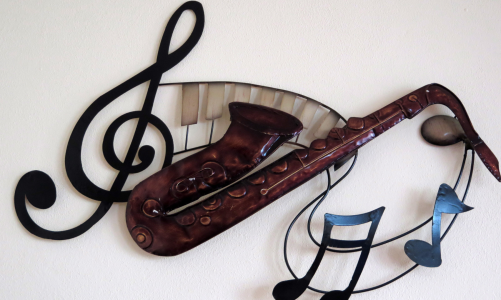If you’re thinking of picking up an acoustic guitar, or if you’ve been playing for a while and want to upgrade to a better instrument, this beginner’s guide is for you. In this post, we’ll cover the basics of acoustic guitars (what they are, what they look like, and what types there are), as well as how to buy one and get started playing.
What is Acoustic Guitar?
Acoustic guitars are often considered the less popular cousin of electric guitars. That said, there are a significant number of acoustic guitar players who enjoy playing the instrument for its unique sound and feel. Acoustic guitars can be played solo or in a duo, and they’re perfect for quieter acoustic-based songs like ballads or country tunes.
One thing to note about acoustic guitars is that they have less volume than their electric counterparts. That’s because the strings on an acoustic guitar are plucked instead of a hit with a pick. This makes for a softer sound than an electric guitar, and it’s great for picking up subtle nuances in the melody that you might miss with more overpowering sounds.
Another perk of playing an acoustic guitar is that it’s easier to stay in tune with than an electric guitar. This is because the strings on an acoustic guitar don’t require tuning as they do on an electric guitar. Acoustic guitars also come in all shapes and sizes, so you can find one that fits your style and needs perfectly.
How to Play Acoustic Guitar
Acoustic guitars are a great way to learn how to play music. They’re relatively easy to learn, and most people can pick up the basics within a few weeks. Acoustic guitars are also affordable, which makes them a great option for beginner guitar players. There are many different types of acoustic guitars; so it’s important to find one that’s comfortable for you. Some people prefer smaller guitars, while others like larger ones.
Once you’ve got your hands on the perfect acoustic guitar, it’s time to dive into the basics. Acoustic guitars typically come with four main strings: E, A, D, and G. Interestingly, the fourth string isn’t usually fretted for specific notes; instead, it serves purposes like tuning or providing a supportive background when you’re singing or jamming out lead guitar chords. It adds a bit of depth and versatility to your playing experience.
There are various ways to play an acoustic guitar, and the approach often depends on the style of music you’re aiming for. Classical acoustic guitars are typically played using the fingers, as they offer better control in comparison to electric guitars within this genre. On the flip side, rock and blues players often lean towards finger-style techniques more frequently than classical musicians. These styles of music place a heavier emphasis on the fingers and hand-eye coordination skills, distinguishing them from classical pieces.
Regardless of the kind of acoustic guitar player you have, playing the instrument properly is essential. Learning how to play guitar is not a difficult task in today’s date. All thanks to the plethora of websites available online that tend to provide valuable resources and lessons for guitar players from the comfort of home. For a more immersive learning experience, you can consider enrolling in a local guitar class. Once you have mastered the basics of chords and strums, you can begin learning more intricate songs.
Types of Instruments
Acoustic guitars come in various shapes and sizes, each having unique features that can make it suited for different types of music.
The most common acoustic guitar shape is the classical guitar, similar to the steel-string acoustic guitars used in country, folk, and rock music. Other popular acoustic guitar shapes include the jazz guitar, which has a more rounded body and a narrower neck than a classical guitar; the spruce-top acoustic guitar, which is made from wood that has been treated with a fungus to make it pliable; and the acoustically sensitive violin-shaped acoustic guitar.
Some acoustic guitars have pickups built into them so they can be plugged into an amplifier and played like an electric guitar. Acoustic guitars are usually much cheaper than electric guitars and ideal for beginner musicians who want to learn how to play music but don’t want to spend much money on equipment.
Musical Styles
There are a lot of different acoustic guitar styles out there, and it can take a lot of work to know which one is right for you. In this article, we’ll outline the different acoustic guitar styles and give you a beginner’s guide to choosing the one that’s right for you.
The first style is the classical style. This is usually played by people who have some experience playing the electric guitar but want to try an acoustic version too. Classical players often use nylon strings because they sound softer than steel strings, and they don’t lose their pitch as quickly.
If you want to play an acoustic guitar that sounds more like an electric guitar, you should go for the folk style. Folk guitars are usually smaller than classical guitars, and they have a narrower neck, so they’re easier to play. They also often have pickups built into them so that you can add amplified sound to your performances.
If you want to play a unique acoustic guitar, you should try the blues style. Blues guitars are usually played with heavy strings and lots of distortion to sound bluesy. You might also want to consider getting a blues guitar with a wooden body instead of a metal one because it will give your sound more of a traditional blues feel.




